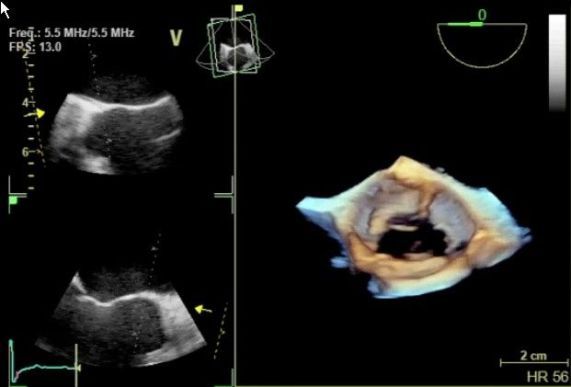GE’s Cardiovascular Ultrasound Gets FDA Nod
The Vivid E9 Breakthrough 2012 includes a 4-D transducer for transesophageal echocardiography, as well as workflow tools.

GE Healthcare’s latest Vivid E9 cardiovascular ultrasound has received FDA clearance, the company announced.
The Vivid E9 Breakthrough 2012 includes a 4-D transducer for transesophageal echocardiography (TEE), as well as tools for workflow efficiencies.
The 4-D TEE transducer allows the system to be used more often in settings beyond the echo lab, the company said. Clinicians can view precise images of the heart during assessment and diagnosis in the echo lab, as well as support procedures in the operating room and cath lab. The system can now be used for procedures such as mitral valve repair, transcatheter aortic valve repair, atrial septal defect closures and patent foraman ovale closures.
The Vivid E9 BT12 also includes several new cardiovascular ultrasound features aimed at improving 4-D imaging and workflow, such as a new tilt and rotate function. Vivid E9 BT12 is also CE Marked and available for sale across Europe and many countries around the world.

New AI-Enabled Portable Ultrasound May Facilitate 50 Percent Reduction in Cardiac Imaging Scan Time
March 28th 2025Artificial intelligence (AI)-powered measurement capabilities provide key features with the Compact Ultrasound 5500CV device, which will be unveiled at the American College of Cardiology (ACC) conference.
The Reading Room: Racial and Ethnic Minorities, Cancer Screenings, and COVID-19
November 3rd 2020In this podcast episode, Dr. Shalom Kalnicki, from Montefiore and Albert Einstein College of Medicine, discusses the disparities minority patients face with cancer screenings and what can be done to increase access during the pandemic.
Can Ultrasound-Based Radiomics Enhance Differentiation of HER2 Breast Cancer?
March 11th 2025Multicenter research revealed that a combined model of clinical factors and ultrasound-based radiomics exhibited greater than a 23 percent higher per patient-level accuracy rate for identifying HER2 breast cancer than a clinical model.